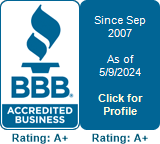The Three Reports
When people talk about financial statements, they generally mean a combination of three specific company reports. These are the balance sheet, the income statement, and the cash flow statement. While each report is generated using the same information from your bookkeeper or accountant, each report provides a different look at your business from a different angle.
The Balance Sheet
The balance sheet is a report that basically provides a snapshot of your company's assets and liabilities at a specific moment in time. It's static and gives high-level information. It shows what your company currently has that's worth value, what debts are owed to others, and what's left for you as a business owner.
Changes in the balance sheet from point to point can indicate whether your business owes short-term or long-term debts, changes in the values of your assets, whether customers are paying invoices in a timely manner, how much of your values are easily accessed, how much you owe vendors, and what your business may be worth if you want to make large-scale changes.
The Income Statement
Also called a profit and loss (P&L) statement, the income statement tells you how much money your company earned during a specific period of time and what your expenses were at the same time. The result indicates if you made money or lost it during that period.
It's easy to see why an income statement is a valuable tool for any business owner. You can track income and loss for any period of business - such as a month, a quarter, or a year - and even compare the results with other similar periods of time before and after. Since you can see both income and expenses, you can better target why you failed to make money or what your successes were.
The Cash Flow Statement
The third report is called the cash flow statement, and it also gives information over a period of time. It separates the actual cash your business received and spent into three categories: normal operating activities, investment activities, and financial activities.
Cash flow is vital to any business, and a lack of it is a significant reason small businesses go under. So you need to know how much cash you have on hand and whether it's flowing through your business in a smooth manner.
On a short-term basis, you can see if you have enough cash to meet payroll, cover debt payments, and pay vendor bills. Over time, you should see an increase in cash from operating activities and investments as your profits grow and your expenses stay in line.
You can also determine how much of your money comes through financing and whether investing in new or replacement assets is appropriate. And it will show if your customers are paying on time.
To learn more about these important financial reports and how you can make better use of them in your own business, meet with your bookkeeper or accountant on a regular basis. At
Williams & Associates Tax Services, we have experts with years of experience to help guide you through understanding your company's financial health and how to improve it. Contact us today and schedule an initial consultation.












